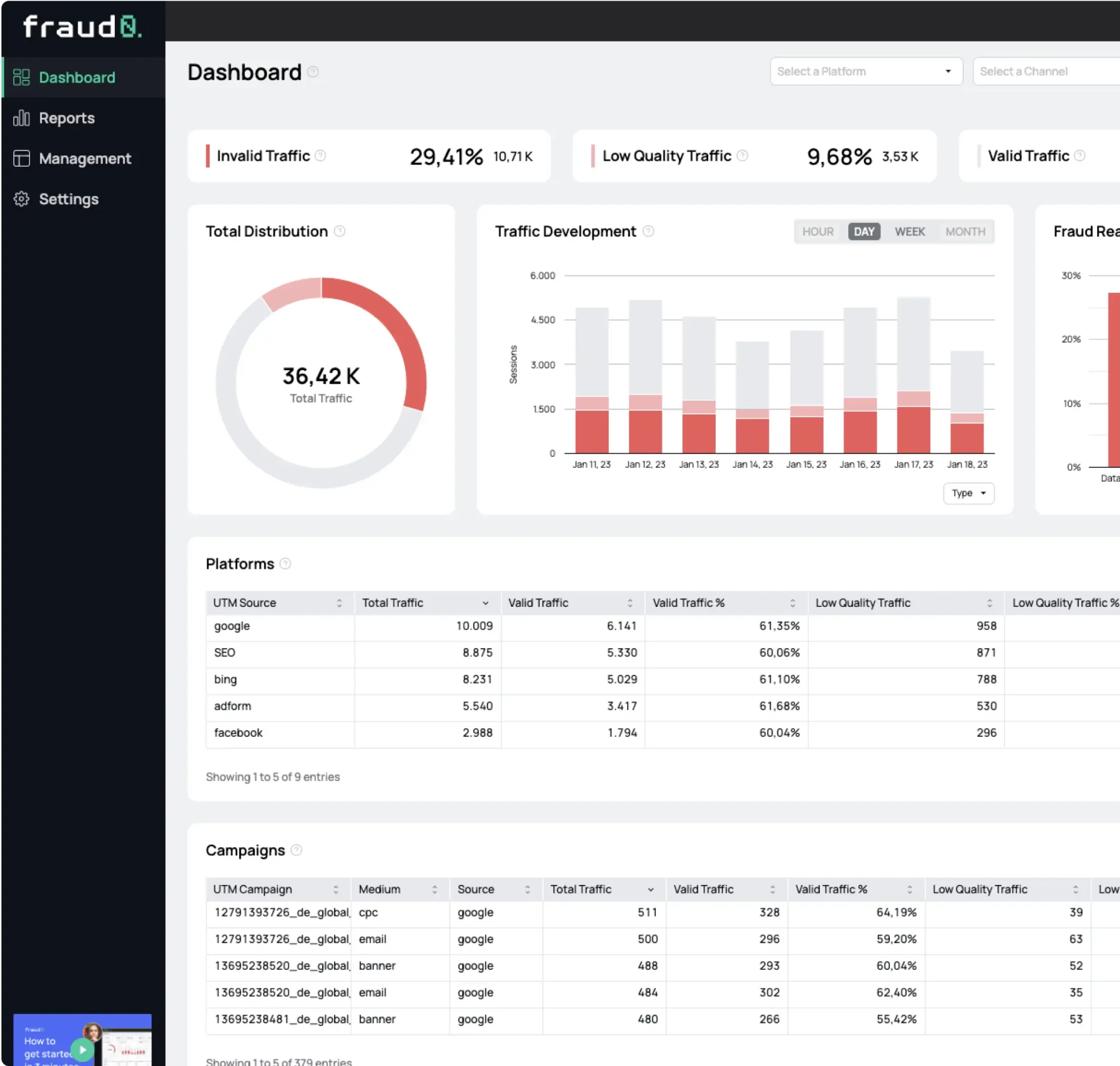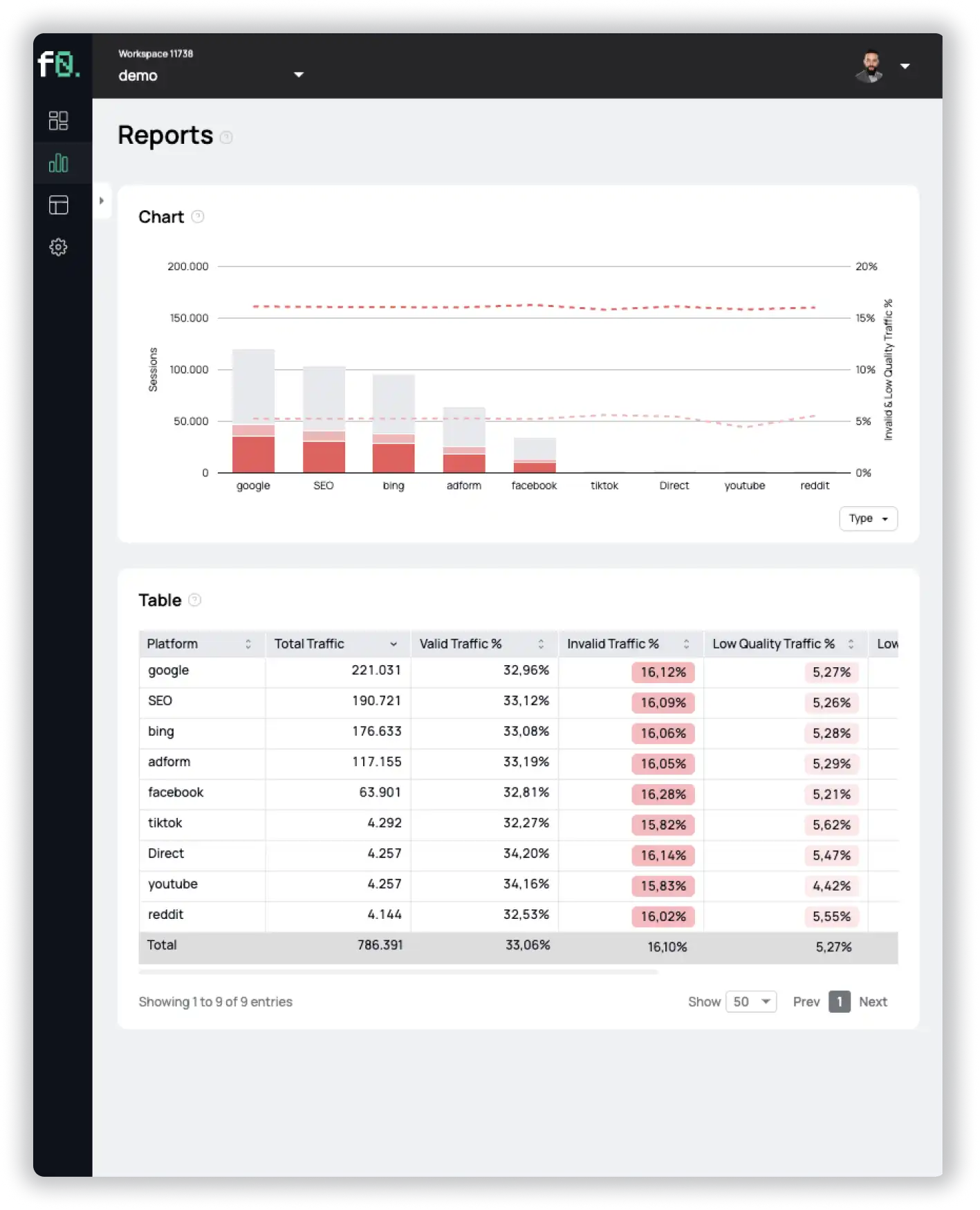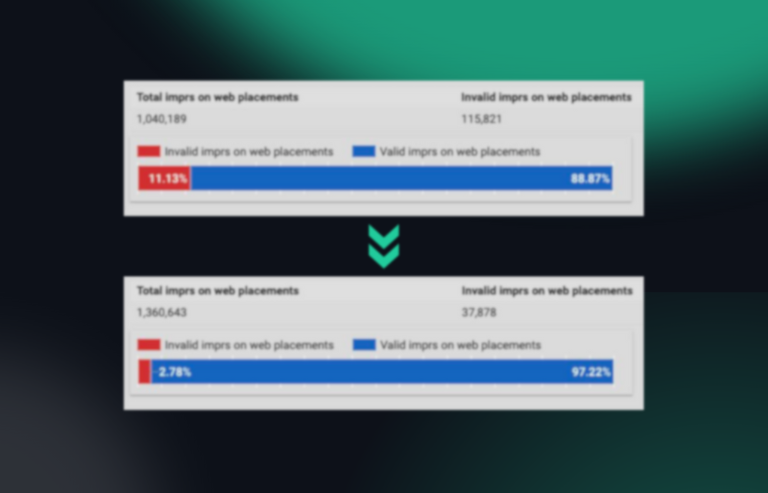- Blog
Detect and Block Fake Sites and Domains with fraud0’s In-Ad Tag Technology

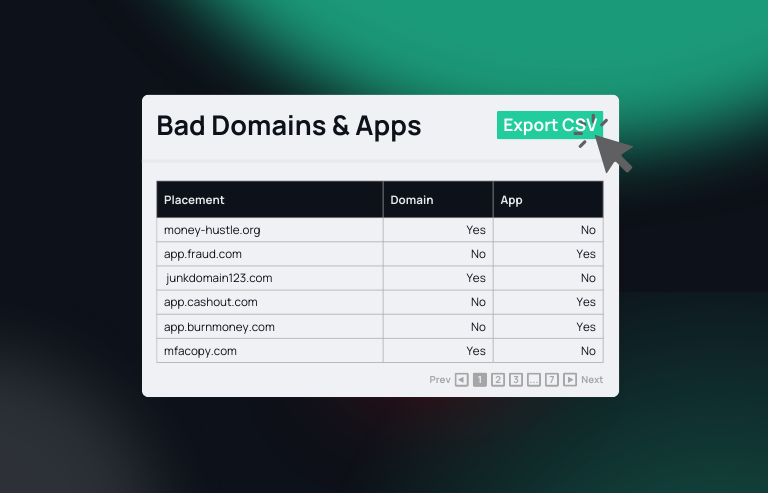
You’ve probably heard about in-ad measurement, but maybe you’re not entirely sure what it is. Or maybe this is your first time hearing about it, and you’re thinking, “Wait, what?” No worries – we’ve got you covered.
What is In-Ad Measurement & How Does It Work?
In the world of digital advertising, ad fraud, junk domains, and shady apps are everywhere, quietly draining your marketing budget. In-ad measurement refers to the use of post-bid JavaScript detection, like fraud0 in-ad tags, to assess ads after they’ve been served. Why post-bid? Because fraudsters can easily bypass pre-bid filtering techniques. Instead of putting their sketchy domain in the bid request, they insert a more reputable one, leaving the bad behavior hidden until after the ad is served.
With fraud0’s in-ad tags, you can finally see exactly where your ads are landing – and whether bots or other forms of fraud are responsible for loading them. Sounds like a game-changer, right? The in-ad tag is a JavaScript snippet that fires once the ad finishes loading, so it won’t interfere with your campaign’s performance. As soon as the tag fires, it collects important data points, allowing fraud0 to pinpoint sites and apps with the highest levels of fraud and the lowest quality.
Keep in mind, bot traffic is just one piece of the fraud puzzle. Websites that buy bot traffic are often involved in other fraudulent activities to maximize revenue. These can include ad stacking, pixel stuffing, ad slot refreshing, pop-unders, forced redirects, and affiliate cookie stuffing, among other shady tactics. We want to empower you to find the most egregious offenders and cut them from your campaigns by adding them to blocklists – saving you precious ad spend.

In the example below, an advertiser optimized their campaign just seven days after measuring with fraud0’s in-ad tags. The invalid impressions (shown in dark red) were cut in half. That’s a big win for both the campaign and the budget!
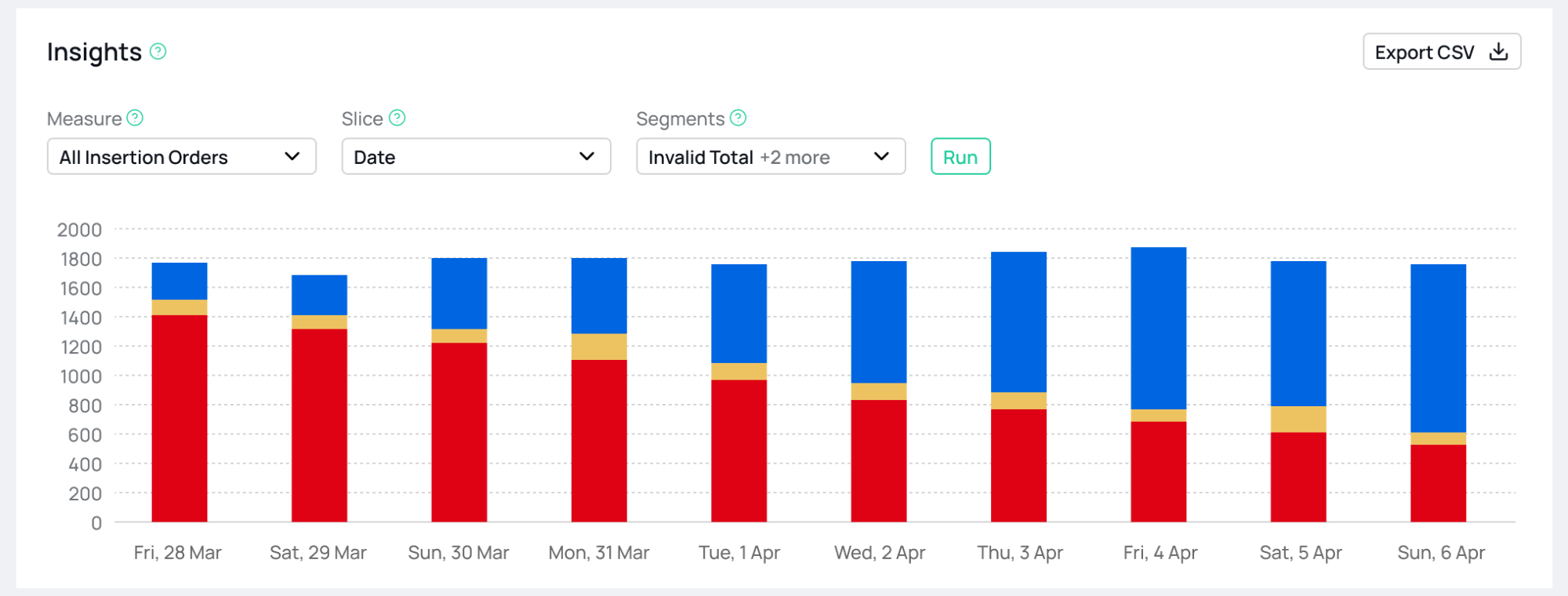
The next screenshot from fraud0’s placement report offers a detailed look at the top offenders eating up your impressions. You’ll see the number of total and invalid impressions in the data grid, with the top bad actors highlighted for easy review. In this specific example, the campaign was launched without any exclusion or inclusion lists, allowing for broad placement reach. However, the report reveals a significant number of placements with high invalid impressions – an alarming stat that, if blocked, would dramatically reduce wasted ad spend.
In column eleven, the main reason for these invalid impressions is evident: pixel stuffing. Your ad is being squeezed into a tiny 0 x 0 or 1 x 1 pixel, making it impossible for anyone to see.

Let’s stick with the same campaign and take a look at the regional origin of the impressions. In this case, it looks good because the campaign should only run in Germany and only a small fraction of the impressions do not originate from Germany.

Our interface was designed with efficiency in mind – saving you time by surfacing the worst offenders first. You’ll see a breakdown of fraud types associated with each site in the columns to the right, giving you all the insight you need to make informed decisions. It’s like having a security system embedded directly into your ad campaigns.
Which DSPs Are Supported?
Our in-ad tag integrates directly with your DSP, working behind the scenes to analyze real-time data and flag suspicious activity, such as bots or invalid impressions.
It seamlessly supports a wide range of DSPs, ensuring coverage no matter where your ads run. Some of the leading DSPs that support this product include:
- Google Display & Video 360 (DV360)
- The Trade Desk
- RTB House
- Criteo
- Amazon
- MediaMath
- Xandr
- Active Agent
- Adform
- … and many more.
Ready to Get Started?
Advertisers often don’t know where their ads are actually shown. If you can’t see it, you can’t fix it. With our advanced toolset, you’ll gain full visibility into your ad placements, enabling smarter decisions – like blocking fraudulent or low-quality sites and apps (and trust us, you’ll want to).
So, what are you waiting for? Try it out with our free trial – analyze up to 50 million impressions or run for 1 month, whichever comes first. Take control of your ad campaigns today!

Learn everything you need to know about Invalid Traffic in 2024 based on our customers’ data. Including a breakdown into marketing channels, industries and much more.
1%, 4%, 36%?
